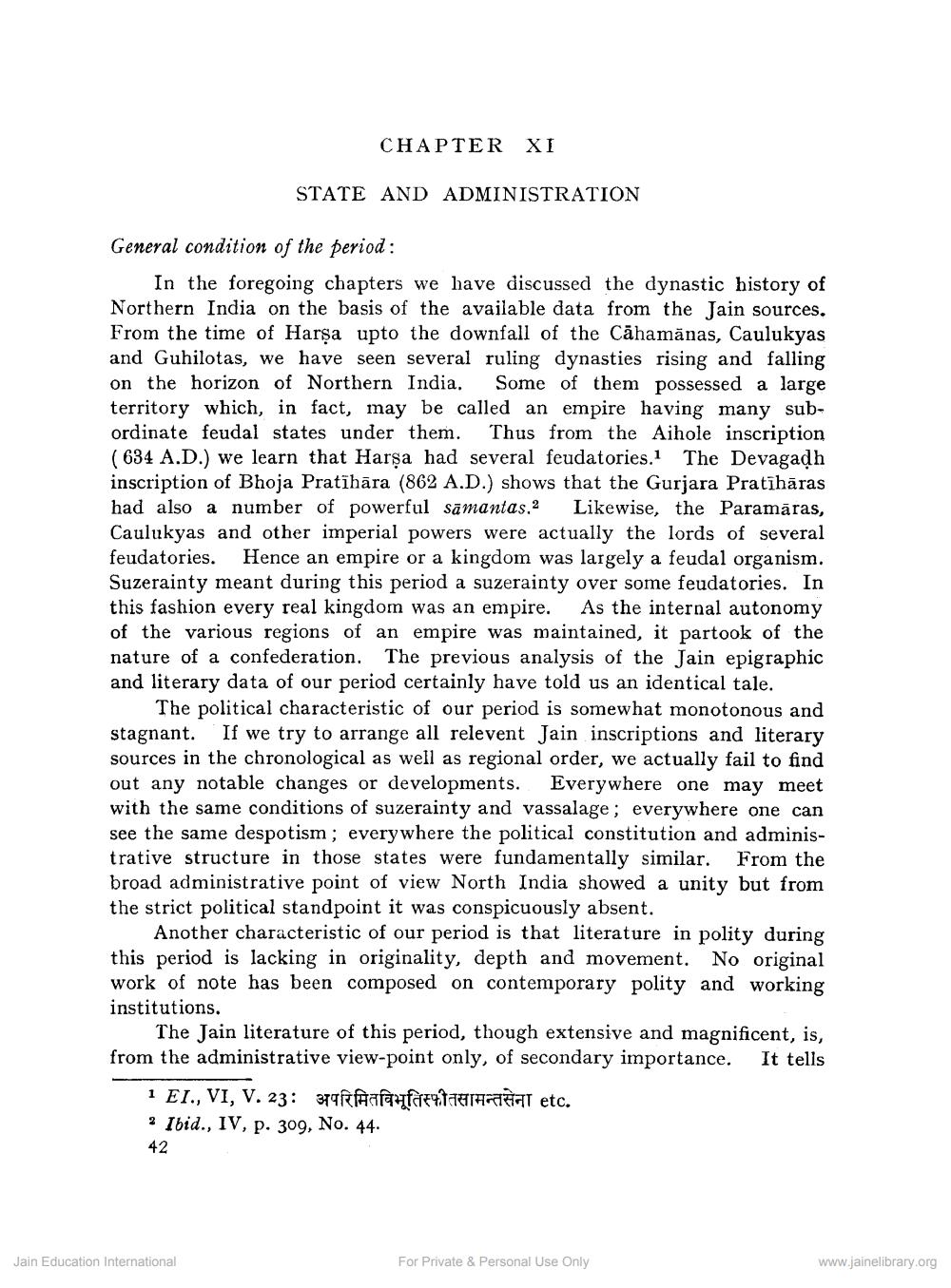________________
CHAPTER XI
STATE AND ADMINISTRATION
General condition of the period:
In the foregoing chapters we have discussed the dynastic history of Northern India on the basis of the available data from the Jain sources. From the time of Harsa upto the downfall of the Cāhamānas, Caulukyas and Guhilotas, we have seen several ruling dynasties rising and falling on the horizon of Northern India. Some of them possessed a large territory which, in fact, may be called an empire having many subordinate feudal states under them. Thus from the Aihole inscription ( 634 A.D.) we learn that Harsa had several feudatories. The Devagadh inscription of Bhoja Pratīhāra (862 A.D.) shows that the Gurjara Pratīhāras had also a number of powerful samantas.2 Likewise, the Paramāras, Caulukyas and other imperial powers were actually the lords of several feudatories. Hence an empire or a kingdom was largely a feudal organism. Suzerainty meant during this period a suzerainty over some feudatories. In this fashion every real kingdom was an empire. As the internal autonomy of the various regions of an empire was maintained, it partook of the nature of a confederation. The previous analysis of the Jain epigraphic and literary data of our period certainly have told us an identical tale.
The political characteristic of our period is somewhat monotonous and stagnant. If we try to arrange all relevent Jain inscriptions and literary sources in the chronological as well as regional order, we actually fail to find out any notable changes or developments. Everywhere one may meet with the same conditions of suzerainty and vassalage; everywhere one can see the same despotism; everywhere the political constitution and administrative structure in those states were fundamentally similar. From the broad administrative point of view North India showed a unity but from the strict political standpoint it was conspicuously absent.
Another characteristic of our period is that literature in polity during this period is lacking in originality, depth and movement. No original work of note has been composed on contemporary polity and working institutions.
The Jain literature of this period, though extensive and magnificent, is, from the administrative view-point only, of secondary importance. It tells
1 El., VI, V. 23: 3TTRðlauferruthAhHT etc. * Ibid., IV, p. 309, No. 44. 42
Jain Education International
For Private & Personal Use Only
www.jainelibrary.org




